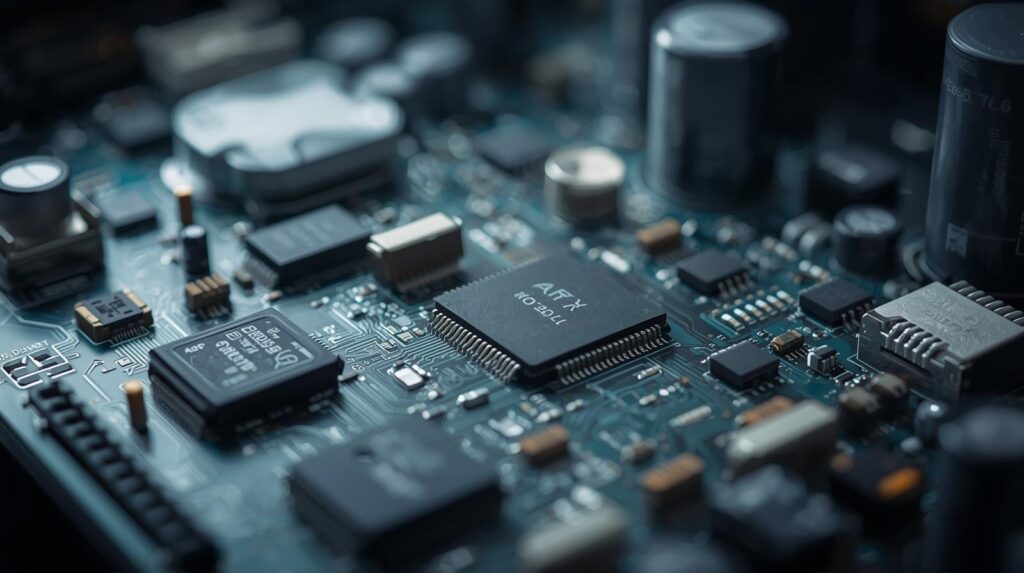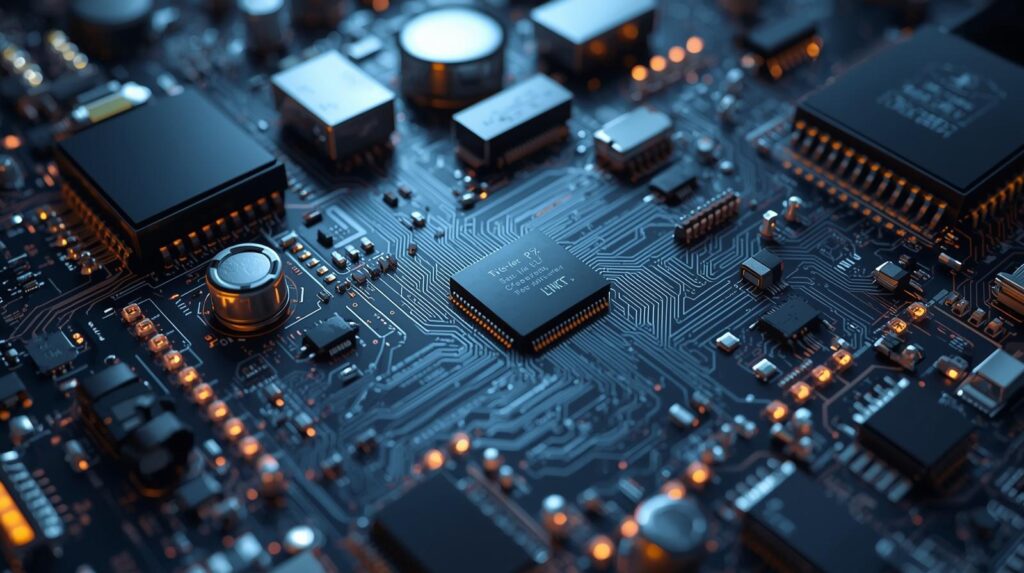Power electronics in consumer electronics plays a pivotal role in modern devices by managing electrical power efficiently. This field involves converting and controlling electrical energy to suit the needs of everyday gadgets. From smartphones to home appliances, power electronics ensures optimal performance while minimizing energy waste. As consumer demands for smarter and more efficient products grow, the integration of advanced power management becomes essential. Understanding this technology helps appreciate how it drives innovation in the electronics industry. The seamless operation of devices relies heavily on these systems to handle voltage, current, and frequency conversions.

Defining Power Electronics and Its Core Principles
Power electronics refers to the study and application of electronic systems for power conversion and control. In consumer electronics, it focuses on transforming AC to DC or vice versa to power devices reliably. Key principles include switching techniques that allow for high efficiency and compact designs. Semiconductors like diodes and transistors form the backbone of these systems, enabling precise energy management. By reducing heat loss and improving response times, power electronics in consumer electronics extends battery life and enhances user experience. This discipline combines electrical engineering with materials science to create robust solutions for daily use.
Historical Evolution of Power Electronics in Devices
The journey of power electronics in consumer electronics began with simple rectifiers in early radios and televisions. Over decades, advancements in semiconductor technology revolutionized the field, leading to smaller and more efficient components. The 1980s saw the rise of switch-mode power supplies that replaced bulky linear transformers. By the 2000s, integrated circuits enabled smarter power management in portable devices. Today, with the advent of wide-bandgap materials, efficiency has reached new heights. This evolution reflects a shift toward sustainability and performance in consumer products.
Essential Components Driving Power Electronics
In power electronics in consumer electronics, several key components work together to ensure smooth operation. Diodes rectify current, allowing unidirectional flow essential for charging circuits. Transistors act as switches, controlling power delivery with minimal losses. Inductors and capacitors store and filter energy, stabilizing outputs in converters. Integrated circuits oversee complex functions like voltage regulation. These elements form the foundation for reliable and efficient consumer devices.
- Power electronics in consumer electronics relies on advanced semiconductors for high-speed switching.
- Transformers in miniaturized forms help in voltage stepping without bulk.
- Pulse-width modulation controllers optimize energy use in variable loads.
- Feedback loops in regulators maintain consistent output despite input variations.
- Protection circuits prevent overloads, safeguarding device longevity.
Power Conversion Techniques in Everyday Gadgets
Power conversion is central to power electronics in consumer electronics, enabling devices to operate from various sources. Buck converters step down voltage for low-power components like LEDs. Boost converters increase voltage for applications needing higher energy, such as displays. Inverters convert DC to AC for motors in appliances. These techniques ensure compatibility with batteries, grids, or USB ports. Efficiency in conversion reduces energy consumption, aligning with green initiatives.
Role in Smartphones and Mobile Devices
Smartphones exemplify the integration of power electronics in consumer electronics through sophisticated battery management systems. These systems regulate charging to prevent overvoltage and extend battery life. Wireless charging coils use inductive power transfer for convenient energy delivery. Power amplifiers in RF sections optimize signal strength while conserving energy. Fast-charging protocols like USB-PD rely on intelligent converters. Overall, these features enhance portability and usability in mobile technology.

Enhancing Television and Display Technologies
In televisions, power electronics in consumer electronics manages backlighting and signal processing for vivid displays. LED drivers control brightness levels dynamically to save power. Power supplies convert mains electricity to low-voltage DC for circuits. In OLED TVs, individual pixel control demands precise current regulation. Energy-efficient modes like standby use minimal power through smart switching. This results in slimmer designs and lower operating costs for users.
Applications in Home Appliances for Efficiency
Home appliances benefit greatly from power electronics in consumer electronics by incorporating variable speed drives in motors. Refrigerators use inverters to adjust compressor speeds based on cooling needs. Washing machines employ similar technology for optimized spin cycles. Microwave ovens rely on high-frequency converters for even heating. Smart thermostats in air conditioners fine-tune power usage. These advancements lead to significant energy savings in households.
- Power electronics in consumer electronics transforms kitchen gadgets with precise control.
- Blenders use PWM for speed variation without excess heat.
- Coffee makers employ timers integrated with power switches.
- Vacuum cleaners feature brushless motors for longer runtime.
- Energy monitors track consumption via embedded sensors.
Power Management in Wearable Electronics
Wearables like smartwatches integrate power electronics in consumer electronics to handle tiny batteries efficiently. Low-power DC-DC converters supply voltage to sensors and displays. Energy harvesting from body movements supplements charging needs. Sleep modes minimize consumption during inactivity. Wireless syncing uses efficient transceivers to conserve power. This enables all-day usage without frequent recharges.
Impact on Audio and Entertainment Systems
Audio devices utilize power electronics in consumer electronics for clean amplification and signal integrity. Class-D amplifiers provide high efficiency in speakers and headphones. Power supplies filter noise for distortion-free sound. In home theaters, multi-channel converters distribute power evenly. Battery-powered portable speakers rely on boost circuits. These systems ensure immersive experiences with minimal energy draw.
Advancements in Charging Technologies
Charging solutions highlight power electronics in consumer electronics through rapid and safe energy transfer. GaN-based chargers offer compact size and high speed. Multi-port hubs manage power distribution intelligently. Adaptive charging adjusts rates based on battery health. Reverse charging allows devices to power others. Innovations like these support the growing ecosystem of connected gadgets.
Energy Efficiency and Environmental Benefits
Power electronics in consumer electronics contributes to sustainability by reducing overall energy consumption. Efficient converters lower carbon footprints in device manufacturing and usage. Compliance with standards like Energy Star promotes eco-friendly designs. Recycling of components minimizes electronic waste. By enabling renewable integration, it supports green energy transitions. Consumers benefit from lower bills and a healthier planet.
Challenges in Miniaturization and Heat Management
Miniaturizing power electronics in consumer electronics poses challenges in thermal dissipation. High-density circuits generate heat that can degrade performance. Advanced cooling like heat sinks or fans add complexity. Material limitations affect efficiency at small scales. Balancing size, cost, and reliability requires ongoing research. Solutions involve innovative packaging and nanomaterials.
Integration with IoT and Smart Home Systems
In IoT ecosystems, power electronics in consumer electronics enables seamless connectivity and control. Smart plugs use relays for remote power management. Sensors in lights adjust based on occupancy via efficient drivers. Integration with voice assistants demands low-latency power responses. Security features include tamper-proof power circuits. This fosters intelligent, responsive home environments.
Future Trends Shaping Power Electronics
Emerging trends in power electronics in consumer electronics include AI-driven optimization for predictive power management. Wide-bandgap semiconductors like SiC promise higher efficiencies. Wireless power transfer expands to larger scales. Integration with 5G enhances data-driven energy use. Sustainable materials reduce environmental impact. These developments will redefine consumer device capabilities.
Role in Electric Vehicles and Portable Power
Though primarily consumer-focused, power electronics in consumer electronics influences EV chargers and portable batteries. On-board converters manage high-voltage systems efficiently. Portable power banks use buck-boost for versatile outputs. Integration with solar panels adds renewable charging. Safety features prevent short circuits. This extends to hybrid applications in daily life.
Standardization and Regulatory Considerations
Standards ensure safety and compatibility in power electronics in consumer electronics. IEC guidelines cover efficiency and emissions. RoHS restricts hazardous materials in components. Certification processes verify performance claims. Global harmonization aids market access. Compliance drives innovation toward safer, greener products.
Case Studies of Innovative Implementations
Real-world examples illustrate power electronics in consumer electronics effectively. Apple’s MagSafe uses magnetic alignment for efficient charging. Samsung’s adaptive displays optimize power for content. Dyson’s vacuums employ digital motors for precision. Nest thermostats learn usage patterns to save energy. These cases showcase practical benefits and inspire further advancements.
Economic Implications for Manufacturers
For manufacturers, investing in power electronics in consumer electronics boosts competitiveness through cost savings. Efficient designs reduce material usage and production expenses. Market demand for energy-saving devices increases sales. Supply chain optimizations lower logistics costs. Intellectual property in innovations provides revenue streams. Overall, it enhances profitability in a crowded market.
Consumer Awareness and Education
Educating users about power electronics in consumer electronics empowers better choices. Awareness of efficiency ratings guides purchases. Tips on maintenance extend device life. Understanding labels like wattage helps in usage. Community forums discuss best practices. This knowledge fosters responsible consumption patterns.
Security Aspects in Power Systems
Security in power electronics in consumer electronics prevents vulnerabilities like hacking through power lines. Encrypted controllers safeguard against unauthorized access. Firmware updates patch potential exploits. Isolation techniques protect sensitive data. In smart devices, secure boot ensures integrity. These measures maintain trust in connected technologies.
Collaborative Research and Development
Collaboration accelerates progress in power electronics in consumer electronics. Universities partner with industry for cutting-edge research. Open-source platforms share designs for community input. Conferences facilitate knowledge exchange. Government funding supports sustainable projects. This ecosystem drives rapid innovation and adoption.
Global Market Trends and Forecasts
The market for power electronics in consumer electronics is expanding rapidly due to tech adoption. Asia leads in manufacturing with cost advantages. North America focuses on high-end innovations. Europe emphasizes green regulations. Forecasts predict growth in wearables and IoT. Opportunities abound for emerging players.
The global Power Electronics Market size was estimated at USD 55.32 billion in 2024 and is predicted to increase from USD 51.73 billion in 2025 to approximately USD 67.42 billion by 2030, expanding at a CAGR of 5.4% from 2025 to 2030.
Download PDF Brochure for More Info @ https://www.marketsandmarkets.com/pdfdownloadNew.asp?id=204729766
The Future of Power in Consumer Tech
Power electronics in consumer electronics continues to evolve, shaping a more efficient and connected world. Its impact spans from personal devices to smart homes, driving sustainability. As technology advances, expect even greater integration and performance. Consumers will enjoy longer-lasting, eco-friendly products. Embracing these changes ensures a brighter future for electronics.
Explore In-Depth Semiconductor & Electronics Market Research:
https://www.marketsandmarkets.com/semiconductorand-electonics-market-research-87.html
FAQs
What is power electronics in consumer electronics?
Power electronics in consumer electronics involves systems that convert and control electrical power in devices like smartphones and appliances for efficiency and performance.
How does power electronics improve energy efficiency?
It optimizes power conversion, reduces waste through advanced switching, and enables features like variable speed drives, leading to lower energy consumption in everyday gadgets.
What are key components in power electronics for consumer devices?
Essential components include diodes for rectification, transistors for switching, inductors and capacitors for energy storage, and integrated circuits for regulation.
Why is miniaturization a challenge in power electronics?
Miniaturization increases heat density, complicates thermal management, and requires advanced materials to maintain efficiency without compromising reliability.
What future trends are expected in this field?
Trends include AI-optimized power management, wide-bandgap semiconductors for higher efficiency, and expanded wireless charging technologies for consumer convenience.
See The Latest Semiconductor Reports:
Solid State Relay Market Size, Share & Trends : https://www.marketsandmarkets.com/Market-Reports/solid-state-relay-market-260413598.html
Battery Technology Market Size, Share & Trends : https://www.marketsandmarkets.com/Market-Reports/battery-technology-market-253343109.html
Radiation Hardened Electronics Market Size, Share & Trends : https://www.marketsandmarkets.com/Market-Reports/radiation-hardened-electronics-market-44047967.html
Smart Appliances Market Size, Share & Trends : https://www.marketsandmarkets.com/Market-Reports/smart-appliances-market-8228252.html
Quantum Computing Market Size, Share & Trends : https://www.marketsandmarkets.com/Market-Reports/quantum-computing-market-144888301.html
Cold Chain Monitoring Market Size, Share & Trends : https://www.marketsandmarkets.com/Market-Reports/cold-chain-monitoring-market-161738480.html